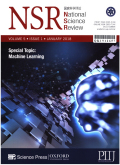- 钛学术文献服务平台 \
- 学术期刊 \
- 科教文艺期刊 \
- 科研管理期刊 \
- 国家科学评论(英文版)期刊 \
Deep-learning-based information mining from ocean remote-sensing imagery
Deep-learning-based information mining from ocean remote-sensing imagery
基本信息来源于合作网站,原文需代理用户跳转至来源网站获取
摘要:
With the continuous development of space and sensor technologies during the last 40 years,ocean remote sensing has entered into the big-data era with typical five-V (volume,variety,value,velocity and veracity) characteristics.Ocean remote-sensing data archives reach several tens ofpetabytes and massive satellite data are acquired worldwide daily.To precisely,efficiently and intelligently mine the useful information submerged in such ocean remote-sensing data sets is a big challenge.Deep learning—a powerful technology recently emerging in the machine-learning field—has demonstrated its more significant superiority over traditional physical-or statistical-based algorithms for image-information extraction in many industrial-field applications and starts to draw interest in ocean remote-sensing applications.In this review paper,we first systematically reviewed two deep-learning frameworks that carry out ocean remote-sensing-image classifications and then presented eight typical applications in ocean internal-wave/ eddy/oil-spill/coastal-inundation/sea-ice/green-algae/ship/coral-reef mapping from different types of ocean remote-sensing imagery to show how effective these deep-learning frameworks are.Researchers can also readily modify these existing frameworks for information mining of other kinds of remote-sensing imagery.

推荐文章
Design and Implementation of the Information Appliance's Home Gateway Based on CORBA
Web_CORBA
information appliance
Home Gateway
CGI
Spatial prediction of landslide susceptibility using GIS-based statistical and machine learning mode
Landslide susceptibility mapping
Statistical model
Machine learning model
Four cases
Diel methane flux from a subtropical eutrophic pond in November based on continuous monitoring
Methane
Eutrophic pond
Diffusive
Ebullition
Flux
内容分析
关键词云
关键词热度
相关文献总数
(/次)
(/年)
文献信息
| 篇名 | Deep-learning-based information mining from ocean remote-sensing imagery | ||
| 来源期刊 | 国家科学评论(英文版) | 学科 | |
| 关键词 | |||
| 年,卷(期) | 2020,(10) | 所属期刊栏目 | REVIEWS |
| 研究方向 | 页码范围 | 1584-1605 | |
| 页数 | 22页 | 分类号 | |
| 字数 | 语种 | 英文 | |
| DOI | 10.1093/nsr/nwaa047 | ||
五维指标
引文网络
引文网络
二级参考文献 (14)
共引文献 (19)
参考文献 (73)
节点文献
引证文献 (0)
同被引文献 (0)
二级引证文献 (0)
1979(1)
- 参考文献(1)
- 二级参考文献(0)
1989(1)
- 参考文献(0)
- 二级参考文献(1)
1995(1)
- 参考文献(0)
- 二级参考文献(1)
1996(2)
- 参考文献(1)
- 二级参考文献(1)
1997(3)
- 参考文献(2)
- 二级参考文献(1)
1998(1)
- 参考文献(1)
- 二级参考文献(0)
1999(2)
- 参考文献(1)
- 二级参考文献(1)
2001(2)
- 参考文献(2)
- 二级参考文献(0)
2002(2)
- 参考文献(1)
- 二级参考文献(1)
2004(3)
- 参考文献(2)
- 二级参考文献(1)
2005(2)
- 参考文献(2)
- 二级参考文献(0)
2006(1)
- 参考文献(0)
- 二级参考文献(1)
2007(2)
- 参考文献(1)
- 二级参考文献(1)
2008(4)
- 参考文献(2)
- 二级参考文献(2)
2009(7)
- 参考文献(5)
- 二级参考文献(2)
2010(3)
- 参考文献(2)
- 二级参考文献(1)
2011(7)
- 参考文献(7)
- 二级参考文献(0)
2012(2)
- 参考文献(2)
- 二级参考文献(0)
2013(5)
- 参考文献(5)
- 二级参考文献(0)
2014(3)
- 参考文献(3)
- 二级参考文献(0)
2015(2)
- 参考文献(2)
- 二级参考文献(0)
2016(7)
- 参考文献(7)
- 二级参考文献(0)
2017(8)
- 参考文献(8)
- 二级参考文献(0)
2018(7)
- 参考文献(7)
- 二级参考文献(0)
2019(9)
- 参考文献(9)
- 二级参考文献(0)
2020(0)
- 参考文献(0)
- 二级参考文献(0)
- 引证文献(0)
- 二级引证文献(0)
引文网络交叉学科
相关学者/机构
期刊影响力
国家科学评论(英文版)
主办单位:
中国科技出版传媒股份有限公司
出版周期:
月刊
ISSN:
2095-5138
CN:
10-1088/N
开本:
大16开
出版地:
北京市
邮发代号:
80-671
创刊时间:
2014
语种:
eng
出版文献量(篇)
773
总下载数(次)
0
总被引数(次)
431
期刊文献
相关文献
推荐文献

 免费查重
免费查重










